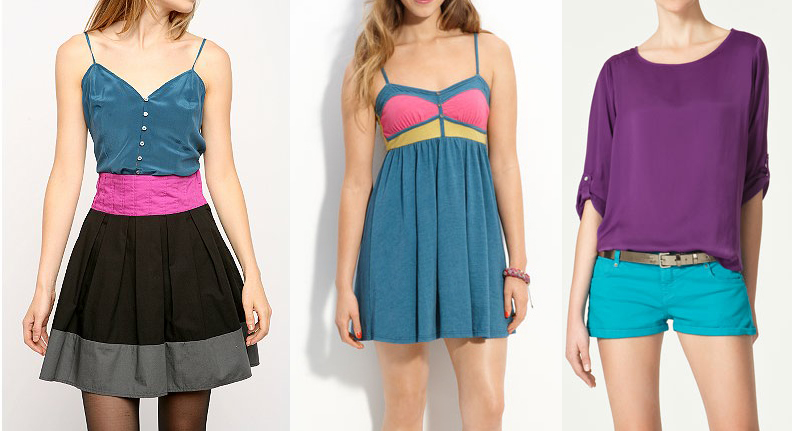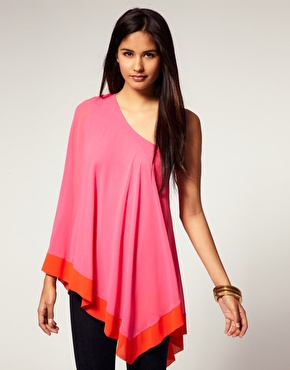What: Color-blocking has been trendy for a while now. Besides florals, it is especially in for summer. The spring 2011 by Gucci prominently features this technique. Still a question remains, how do you combine colors to pull off this trend?
This question pokes into my curiosity and causes me to look into basic color theory for an answer. The explanation is clear if you just take a look at the color wheel:
 Rule #1: You can always combine colors with neutrals/non-colors, i.e. black, white and gray. Examples black/pink, blue/white, orange/black and black/white/taupe.
Rule #1: You can always combine colors with neutrals/non-colors, i.e. black, white and gray. Examples black/pink, blue/white, orange/black and black/white/taupe.Rule #2: This one is the most intuitive when people think of colors. Analogous (similar) colors, which are close to each other on the wheel, go well together. The below examples combine the different shades of the same hue.
Rule #3: Colors that are opposite on the wheel arecomplementary, which means they also bode well. Examples are: purple - yellow, blue - orange, pink - light green (watermelon), etc.
Rule #4: Triadic colors are combinations of any three colors that are evenly spaced on the color wheel. You can pull all three or, more commonly, two of the three in an outfit. Popular examples are turquoise (light blue) - violet (reddish purple), teal (blue green) - pink (light red purple) - mustard (yellow/orange), royal blue (deep blue) - yellow green - orange (red/yellow), teal - purple - orange (Gucci, first pic).
Rule #5: Split-complementary colors consist of two adjacent colors and one complementary. For example: orange - pink - green, purple - blue - mustard.





No comments:
Post a Comment